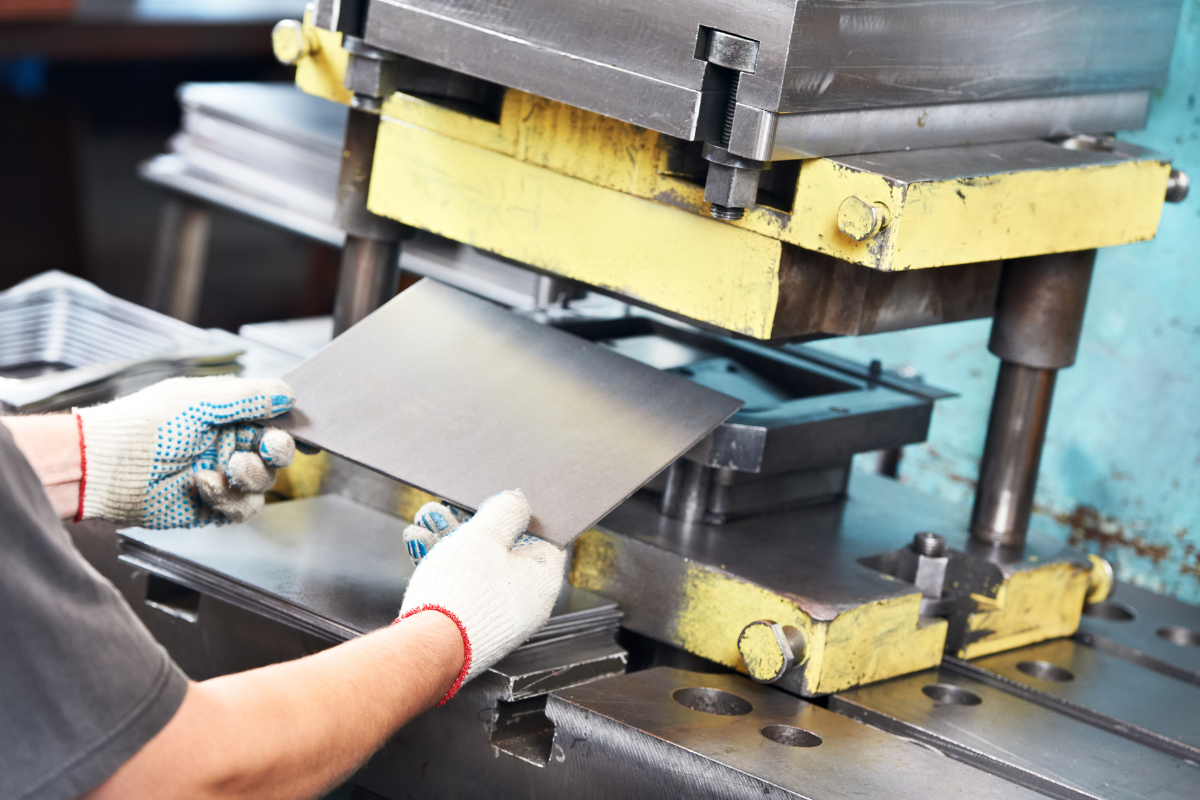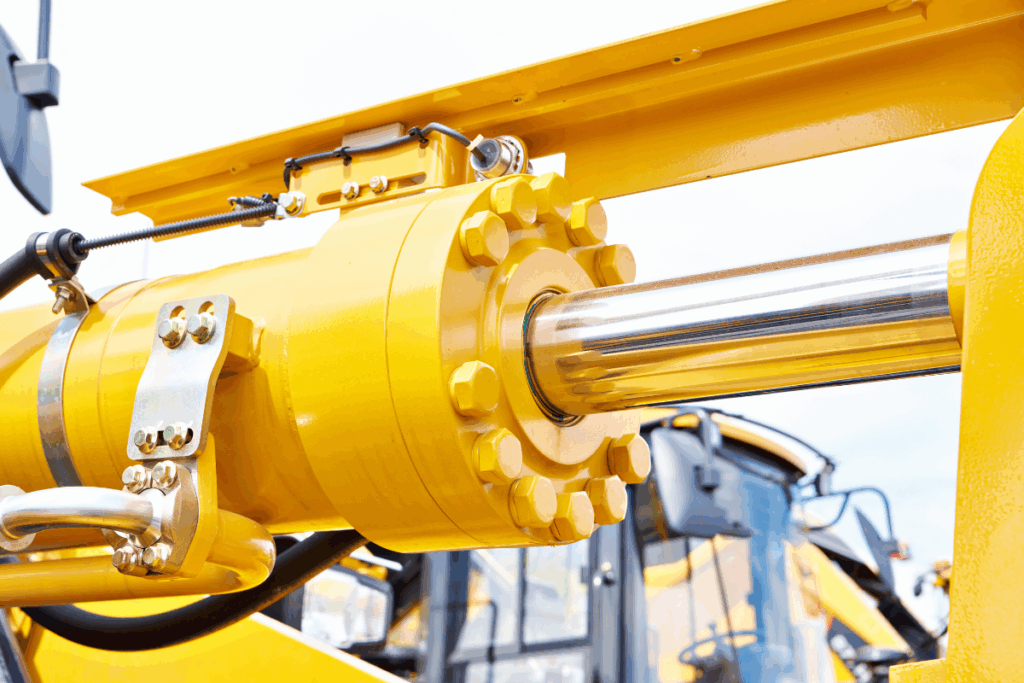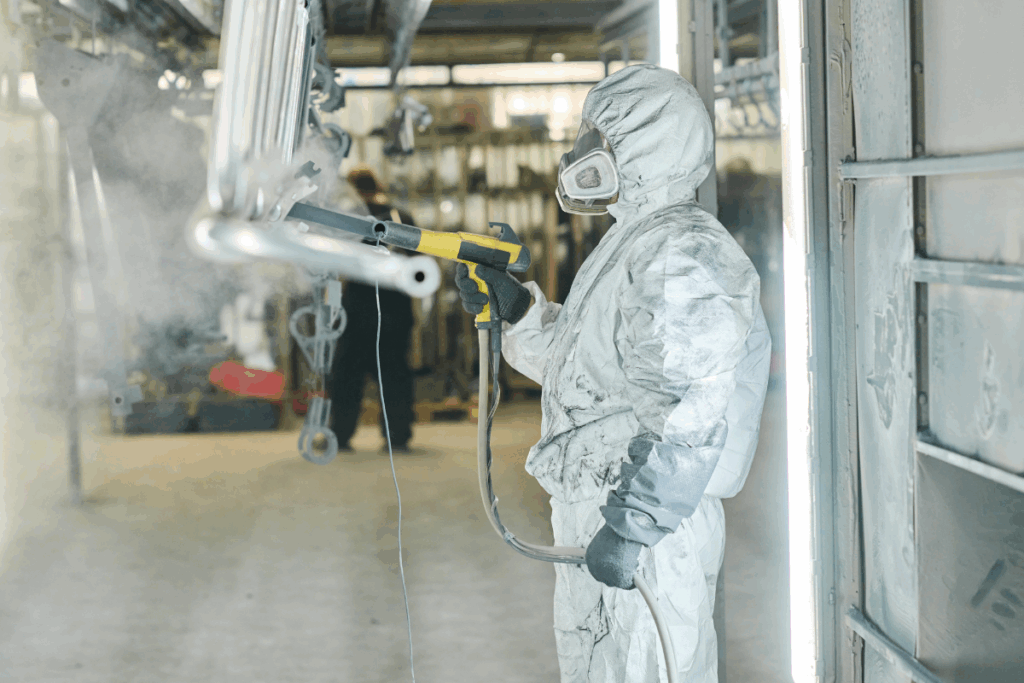There is a broad range of precision machining techniques used by metalworking engineers to transform raw materials into high-quality, to-spec parts and components. These processes have been honed over decades, and sometimes centuries, so modern fabrication production facilities can deliver products that bring virtually any dream design into reality.
On this month’s blog, we discuss two of the more common machining techniques, metal forming and stamping, so that you can gain a deeper understanding of their similarities and differences, and where each technique should be applied.
What Is Metal Forming?
Metal forming refers to the process used to change the shape of a metal workpiece. It uses forces such as stress, compression, or tension, and is applied without removing or adding material.
The fundamental principle of this approach relies on the metal’s plastic deformation, in which the force applied to the metal exceeds its yield strength, causing it to flow and deform into a new shape permanently. Tools commonly used in metal forming are dies, punches, and rollers, which bend, stretch, roll, or indent the workpiece into the final desired shape.
Metal forming is commonly used in industries such as automotive, aerospace, and construction, as it enables the creation of custom structural components, machinery parts, piping systems, and other complex components from raw metal stock.
What Is Metal Stamping?
Metal stamping is a specialized high-speed form of metal forming. It uses custom dies and high-pressure stamping presses to shear, cut, punch, or bend flat metal sheets into complex shapes with consistent quality and precision.
Different types of metal stamping methods can be utilized during production, including:
Progressive Die Stamping
A single die with multiple stations that perform a different operation in sequence as the metal strip moves through them.
Fourslide Stamping
Employs four or more tool slides to bend and shape the metal from multiple angles simultaneously.
Deep Draw Stamping
A sheet metal blank is radially drawn into a forming die by the mechanical action of a punch.
Transfer Die Stamping
A mechanical transport system that moves the workpiece between stations after it’s been separated from the main strip (similar to progressive die stamping).
Fine Blanking
A precision process used for applications requiring extremely tight tolerances, smooth edges, and high accuracy.
Metal stamping is often the preferred method for fabricating auto body panels and brackets, structural parts, and circuit board components.
What Are The Key Differences Between Metal Forming And Stamping?
Although the two processes sound similar in principle, several critical differences must be understood so manufacturers can make an informed choice about which method is better for their project.
For example, stamping tends to work better with thinner materials than forming, making it a preferred method for fabricating intricate, detailed, and lightweight components with tight tolerances. It’s also commonly used more in high-volume production, where consistent manufacturing repeatability is paramount.
Forming is often more complex and less precise than stamping, but it can handle a broader range of materials. This makes it preferred for curved or cylindrical pieces where precision and repeatability are not critical.
In terms of cost, stamping’s ability to deliver streamlined, high-volume production requires an initial setup process that can result in additional fees. However, many manufacturers find that the upfront investment pays for itself through faster delivery and reduced time to downstream processing and market entry.
Forming can provide cost savings as it is generally used on low-volume parts that don’t require the same high level of precision as stamping. However, increased time and labour on large-scale projects can significantly increase the required investment.
Your fabrication team should be able to make recommendations that balance the project’s needs with your budget, ensuring that, regardless of the chosen method, you receive high-quality parts that deliver performance and reliability in the field.
If your current service provider can’t do that for you, give AC Fabrication & Assembly Solutions a call.
Read More: Industry 4.0: Transforming The Precision Machining Industry For The Better
Collaborate With AC Fabrication & Assembly Solutions On Your Next Off-Road Project
Our team of skilled engineers and fabricators utilizes integrated project development processes that include everything from design and precision machining to finishing and assembly.
Our agriculture equipment manufacturing company also specializes in parts and equipment for the construction, mining, rail, defence, and energy sectors.
With AC Fabrication in your corner, you can be assured of quality products and exceptional customer service that focuses solely on the successful completion of your project.
Read More: How Positive Collaboration Between Suppliers And Customers Strengthen The Supply Chain
AC Fabrication and Assembly Solutions: Using Advanced Metalworking Techniques To Deliver Better Quality Products
With 300 years of combined experience under our belts, we offer unparalleled quality, durability, and service that you won’t find with any other supplier. Our solutions are delivered by skilled technicians whose primary goal is to create sustainable growth for our customers.
Contact an AC Fabrication and Assembly Solutions expert at 204-952-1900 or sales@acfabandassembly.com for a custom quote on your next project today!



